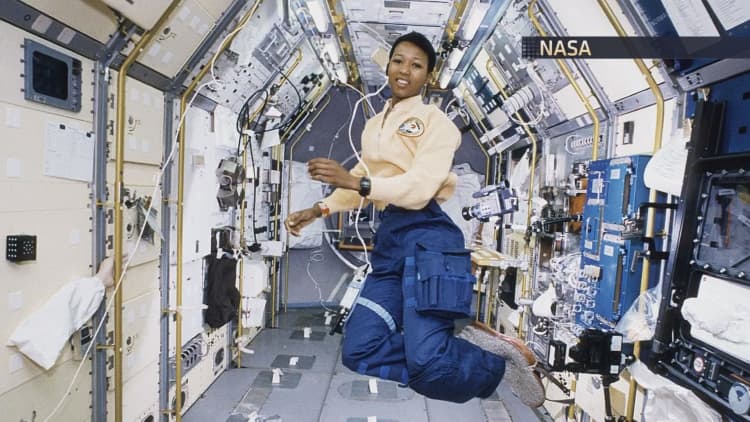In the 55 years of space travel, fewer than 550 people have journeyed out of earth's orbit. Mae Jemison is one of them.
More than 20 years ago, Jemison became the first African-American woman in space aboard the Endeavour space shuttle. Today, she is working to extend human space travel beyond our solar system.
"In order to do space exploration, you have to push further than the things that we know how to do now," Jemison told CNBC's On The Money in an interview.
Jemison is the principal of "100 Year Starship," a joint initiative between the Dept. of Defense and NASA working to achieve human interstellar travel in the next century.
Having been in space, does she believe life could exist on other planets?
"I don't know that having been in space gives me a better idea of whether life might exist on other planets," Jemison said with a laugh.
"The reality is that we know that this universe, that our galaxy, has billions of stars. We know that stars have planets," she said. "So the likelihood that there is life somewhere else to me is just absolutely there."

It's a tantalizing question that gets more intriguing by the day. Last month, a new Earth-like planet, Proxima b, was discovered orbiting the closest star to the sun.
The planet is located 4.2 light years away. Slightly larger than Earth, scientists say the planet is warm enough that if there's water present, it could be in liquid form.
"That's a long way away, but it's the closest neighboring star (to Earth)," Jemison told CNBC. That means "we might have an opportunity to see it, one day."
Closer to home, yet still unexplored, is Mars. NASA has a stated goal of getting astronauts to set foot on the red planet within the next 20 years.
"As far as I'm concerned, we could have been on Mars sooner than that," Jemison said to CNBC. "In fact, I was thinking as a little girl growing up that I would be there. When I look at whether we can go to Mars, it's definitely something we can do. "
Jemison said people have to understand the connection between space exploration and how it applies to life here on earth. She points to two examples of innovations that came from NASA missions that impact our daily lives.
"Today, we take GPS systems for granted [but] they were in space," the astronaut said. "We take magnetic resonance imaging, 'MRI' for granted and yet they were really built on the algorithms… used to interpret signals of probes that looked at Venus, for example," she added.
"The issue is whether we have the commitment and whether we connect it back to life here. So folks understand this isn't just a boondoggle," Jemison said. "It's really about changing our world here. "
She also changed her hometown. Just four weeks ago, Jemison cut the ribbon to open a brand new public high school, "Jemison High School" in Huntsville, Alabama—not far from her birthplace in Decatur.
"It's an honor to have something named after you," she told CNBC.
On the Money airs on CNBC Saturday at 5:30 am ET, or check listings for air times in local markets.




